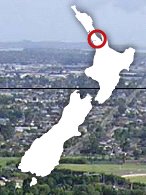News
Manukau City: Face of the future
Wednesday 25th of February 2009
Manukau City is the country’s third largest city. It’s also the fastest growing. 
The 2006 census put the population at 328,968 – up 16.2% on the previou...
Want to read the full article?
Click the button below to subscribe and will have unlimited access to full article and all other articles on the site.
8 min read
10 min read






![[The Wrap] Bye Bye Bayly](https://goodreturns.publit.io/file/c_fill,w_900,h_600/39f23ac1-f7c7-4854-b700-a150004ebbac.webp)


